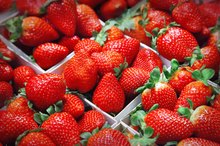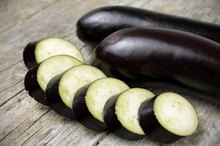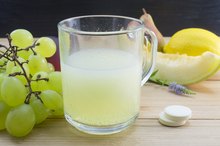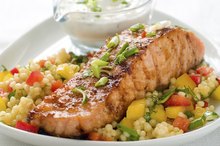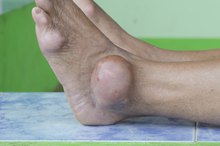Broccoli for Gout
Gout is a rheumatologic disorder characterized by pain and inflammation in the joints. An attack is brought on by increased uric acid in the body which is a byproduct of purine breakdown. Following a low-purine diet may help prevent attacks or alleviate symptoms. Broccoli is classified as a food that is low in purines.
If you are experiencing serious medical symptoms, seek emergency treatment immediately.
Gout
Gout is a form of arthritis that can come on suddenly in a severe, painful attack. The intense joint pain and discomfort often occurs in the big toe, but can occur in other joints as well. Gout is caused by the accumulation of urate crystals in the joint due to high uric acid levels in the blood. High blood pressure, excessive alcohol consumption and a family history of gout can increase the risk of developing gout. Chronic conditions, such as diabetes, are associated with gout, and some medications can increase uric acid levels. In general, men have higher uric acid levels than women, and levels increase in women after menopause.
- Gout is a form of arthritis that can come on suddenly in a severe, painful attack.
- Gout is caused by the accumulation of urate crystals in the joint due to high uric acid levels in the blood.
Purines
Strawberries for Gout
Learn More
When your body breaks down purines, uric acid is formed and is excreted by the kidneys. Purines occur naturally in the body as well as in some foods. Foods high in purines include:
- organ meats
- gravies
- yeast
- anchovies
- herring
- mackerel
- scallops
- alcoholic beverages
Beer is especially high in purines because of the yeast content. Legumes, mushrooms, asparagus, spinach and cauliflower contain a moderate amount of purines.
- When your body breaks down purines, uric acid is formed and is excreted by the kidneys.
- Legumes, mushrooms, asparagus, spinach and cauliflower contain a moderate amount of purines.
Broccoli and Gout
Broccoli is rich in vitamin C and fiber, and it is a good source of folic acid and potassium. The American Dietetic Association identifies broccoli as a functional food because it is rich in bioactive compounds, such as sulforaphane 34. The ADA classifies a functional food as one that provides additional health benefits and may reduce disease risk because of the nutrients or substances it contains. Broccoli is a smart addition to a healthy diet, and you can eat it if you have gout because it is low in purines. According to the publication “Gout” by Drs. Grahame, Simmonds and Carrey, broccoli is categorized as having a low purine level, specifically grouped with foods that contain 50 to 100 mg of purine per 100 g of the food. High-purine foods have 150 to 1,000mg purines per 100 g of the food.
- Broccoli is rich in vitamin C and fiber, and it is a good source of folic acid and potassium.
- Broccoli is a smart addition to a healthy diet, and you can eat it if you have gout because it is low in purines.
General Gout Diet
Is Eggplant Good for Gout?
Learn More
The body produces purines, so altering the diet is only one part of the therapy for gout. Take any medications your doctor prescribes and try to reach a healthy weight. of meat, fish and poultry per day, and abstain form alcohol. During remission, the ADA recommends the same fluid intake, continue abstinence from alcohol and follow a well-balanced diet, avoiding high-protein diets for weight loss.
- The body produces purines, so altering the diet is only one part of the therapy for gout.
- During remission, the ADA recommends the same fluid intake, continue abstinence from alcohol and follow a well-balanced diet, avoiding high-protein diets for weight loss.
Related Articles
References
- National Institute of Arthritis and Musculoskeletal and Skin Diseases: Gout
- “Nutrition Care Manual”; American Dietetic Association; 2009
- “Gout”; Rodney Grahame, H. Anne Simmonds, Elizabeth Carrey; 2003
- The Merck Manual for Health Care Professionals. "Gout." Accessed March 25, 2016. http://www.merckmanuals.com/professional/musculoskeletal_and_connective_tissue_disorders/crystal-induced_arthritides/gout.html
- National Institute of Arthritis and Musculoskeletal and Skin Diseases. "Questions and Answers About Gout." Accessed March 25, 2016. http://www.niams.nih.gov/Health_Info/Gout
- The Merck Manual for Health Care Professionals. "Gout." Accessed March 25, 2016.
- National Institute of Arthritis and Musculoskeletal and Skin Diseases. "Questions and Answers About Gout." Accessed March 25, 2016.
Writer Bio
Melanie Di Stante is a registered dietitian and a NCBDE-certified diabetes educator with more than 10 years of experience. She received a bachelor's degree in dietetics from the University of Connecticut and a master's degree in human nutrition from the City University of New York. Di Stante has been writing professionally for more than 10 years, contributing to local newspapers and "Today's Dietitian."
